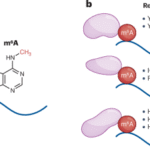Touyz, R. M., de Baaij, J. H. F., & Hoenderop, J. G. J. (2024). Magnesium disorders. The New England Journal of Medicine, 390(21), 1998–2009. doi:10.1056/nejmra1510603
•The normal serum magnesium concentration in adults is 1.7 to 2.4 mg per deciliter (0.7 to 1.0 mmol per liter) and is tightly controlled through intestinal absorption, renal excretion, and storage in bone.
•Hypomagnesemia is present in 3 to 10% of the general population, but its prevalence is increased among persons with type 2 diabetes and hospitalized patients, especially those in the intensive care unit.
•Hypomagnesemia is usually associated with other electrolyte derangements, including hypocalcemia, hypokalemia, and metabolic alkalosis, and refractory hypokalemia is often responsive to treatment only after the magnesium concentration has been normalized.
•Patients with hypomagnesemia often present with nonspecific symptoms, such as lethargy, muscle cramps, or muscle weakness, and thus the diagnosis of magnesium deficiency may be overlooked.
•Many drug classes, such as antibiotics, diuretics, biologic agents, immunosuppressants, proton-pump inhibitors, and chemotherapies, cause renal magnesium loss and hypomagnesemia.
•In 80% of patients with familial hypomagnesemia, pathogenic variants in genes that encode for magnesium transport pathways have been identified.




Touyz, R. M., de Baaij, J. H. F., & Hoenderop, J. G. J. (2024). Magnesium disorders. The New England Journal of Medicine, 390(21), 1998–2009. doi:10.1056/nejmra1510603











